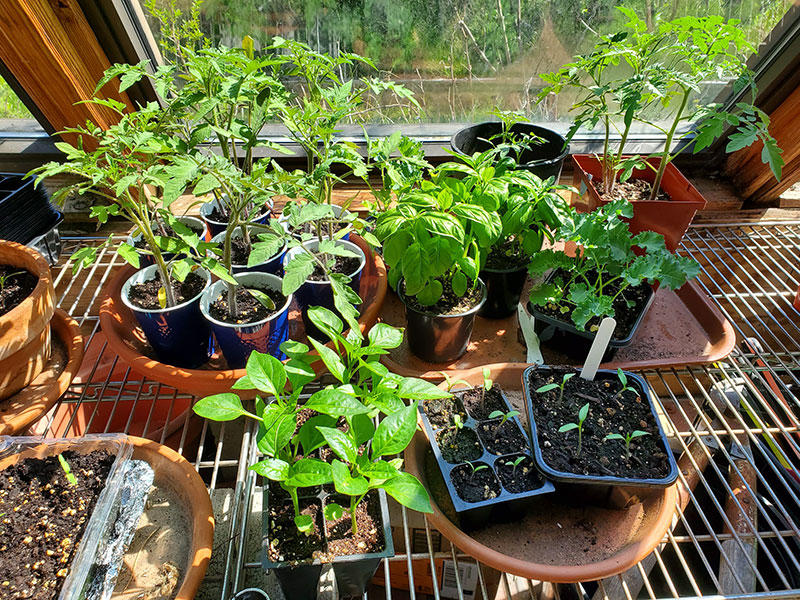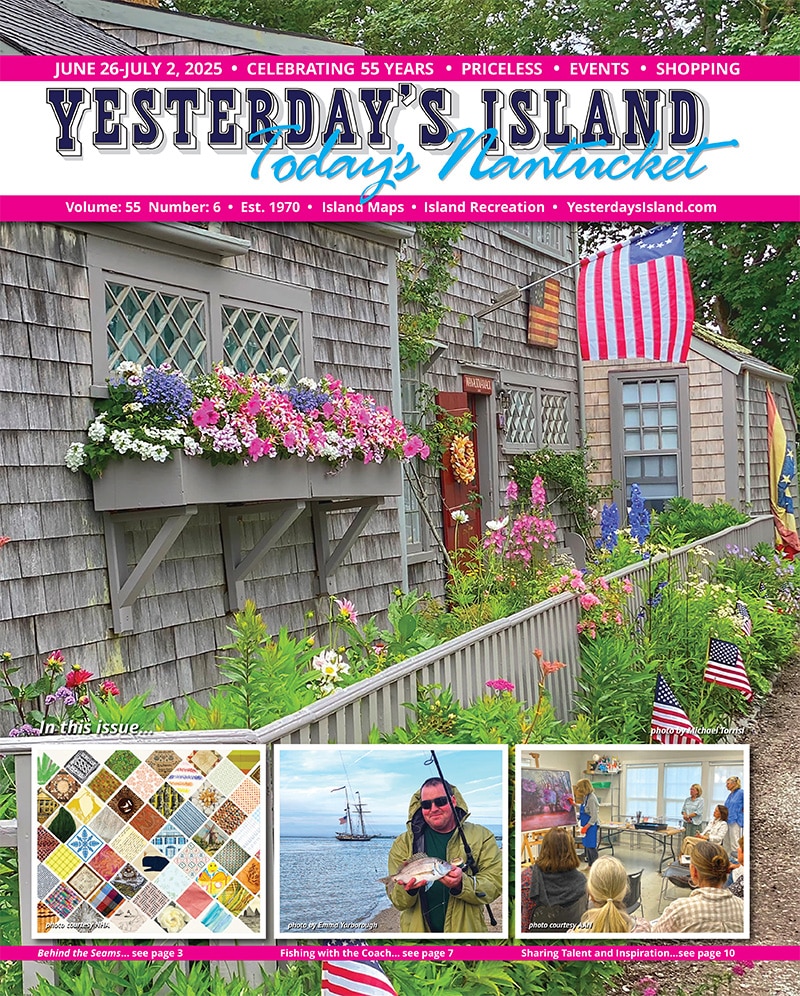by Greyson Keller
There’s a party up above,
With candy in the sky.
Petals, the color of love,
If only I could fly.
As I sit in the back garden basking in the glory of a Kwanzan cherry tree, its prolific pink petals parachute gracefully to the ground. The wind whispers through the canopy and the mind begins to wonder. Will my pepper seedlings ever start to grow? Is it too late to sow more peas? What will Nantucket’s summer look like in this “new normal’’? Although these questions can paralyze any action, I think it’s important to do just that. Act. Sow more seeds, feed struggling plants, and plant your pandemic patch. In these next few paragraphs, I’ll guide you step by step in building the foundation of your veggie garden.
Let’s start by saying that raised beds are a great option. They’re aesthetically pleasing, they give you more immediate control over the quality of your soil, and they’re fun to build. First you’ll need to decide on the material of your raised beds. In my dreams, mine are made out of reclaimed granite, but in my backyard I went with untreated planks. These planks are unmilled, rough cut 2x10s. There is a bit more meat to them than your average spruce 2”x10”, but either will work just fine. I know that pressure-treated lumber lasts longer, particularly when it will be constantly wet and sitting in soil, but I would rather rebuild these raised beds every five years than eat any potentially leached chemicals.

This island is overflowing with incredibly talented carpenters, so if that’s you, don’t let me hinder your creativity. If you’re just an average bloke who can barely read a tape measure like myself, start simple. Build a rectangle or a square. I’d recommend not building any wider than four feet, as you’ll want to be able to reach across the garden. Once the bed is built, and before you add the soil, go grab those folded up Amazon boxes you have stashed next to your recycling. Pull off any plastic tape and then lay them on the ground inside your bed. If you’re building this bed on top of an existing lawn, the cardboard will suppress the grass and keep the weeding to a minimum in the future. Don’t worry! The cardboard will break down over time and the worms will thank you.
I’ll just take this moment to mention that your pandemic patch doesn’t need to be a raised bed. The veggies will grow just as well if you decide to plant in pots or directly into an existing bed of any kind. Even a window box is a creative way to start your patch, just make sure you plant veggies that aren’t deep rooters.
Now it’s time for your growing medium. Bagged soil or compost is great, but it can get expensive. If you have the ability to buy by the yard, you’ll save some money. For the purpose of this guide, I’ll assume you’ve bought topsoil from a local vendor in bulk. Go ahead and fill your bed, leaving about three inches to the top of the edge. Fill the final few inches with bagged compost. It comes with a price, but compost is packed with nutrients that will benefit your plants all summer long. Finally, I like to grab an organic all purpose granular fertilizer. Espoma is a good brand, they break it down into comprehensible categories. Tomato- Tone, Bulb-Tone, Plant-Tone, etc… hard to mess that up. Sprinkle just a bit over the top of your finished grade and scratch it in. This will act as a slow release fertilizer for your plants as they move through the season.
Here’s where the fun begins. Since it’s late May, you can pretty much direct sow anything you want. Go crazy! Tomatoes, green beans, zucchini, and cucumber. Don’t worry about spacing, this is a learning year, and you can always thin out anything you’ve sown too densely. The important thing is that you’re sowing. You’re doing it! Love is a verb, and you are loving your garden.
With that said, I can hear the garden gurus in the back of my head. “Don’t sow cool weather crops like kale or lettuce because they’ll bolt.” Bolting is when a vegetable sends up a stalk to flower. It’s doing this because it’s too hot, so it’s stressed and wants to drop seeds for the next generation. I say, “who cares.” The seeds will grow enough for you to enjoy the process and get at least a meal out of it. Plus, when it’s time to pull the cool weather plants, you’ll have more real estate to plant some autumn harvest goodies. Things like beets, radish, turnips, leeks, kale, chard, and spinach can all be sown in July or August. You’ll be glad you did when you’re still getting garden-fresh greens in late October.
We’ve all killed that poor plant that sits on our kitchen window sill, right next to the faucet. What a torturous way to go. Thinking of that, everyone wants to automate watering with irrigation systems. I think that’s great and could gladly recommend some amazing local companies that can do an install for you. However, when it comes to your pandemic patch, I think it’s best to hand-water. I know it sounds tedious and like hard work, but if you’re hand-watering you’re also enjoying time spent in your garden. You’re breathing fresh air. You’re allowing yourself to notice the wind whispering through the canopy of your trees. You’re smelling the metaphorical roses. You might notice a bug is eating your veggie before you get to. You’ll know to ask your friend Google how to handle that. You’ll also see any teeny tiny weeds that are no work at all to pull. You’re preventing problems before they start.
This all comes back to having some say in what is happening around you. Gardening is so much more than food production or pairing the best colors and textures of trees and perennials together. A garden is a sanctuary; a garden is a healer. The more time you spend in a garden, the more available you are for all the other aspects of life.
There are so many “rules” to gardening, but I can assure you, it is not this unattainable fairyland where a subscription to Town and Country is the admission fee. Throw the traditional rules out the window and buy seeds, buy starts, buy shrubs and trees. In this “new normal” it can feel difficult to have much control. Gardening is something where you can have your thoughts and feelings heard, you can make decisions and reap the rewards for years to come. So roll up your sleeves, grab your wellies, and welcome yourself to a lifetime of gratitude in the garden.
I’d love to follow you on your gardening journey. Tag us in any #pandemicpatch photos on instagram with @thegardengroup. Feel free to ask questions too, I’d love to hear from you. Cheers to you and your pandemic patch!


